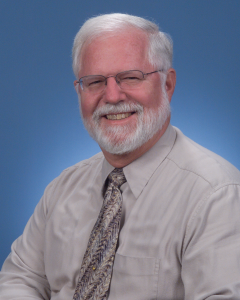Dr. James E. Butler
Gas/Surface Dynamics Section, Chemistry Division
Naval Research Laboratory, Washington, DC
 The Chemical Society of Washington will present the 2009 Hillebrand Prize to Dr. James E. Butler, Head of the Gas/Surface Dynamics Section at the Naval Research Laboratory, at its dinner meeting on March 11, 2010. Dr. Butler will address the meeting with a seminar entitled “Alchemy.”
The Chemical Society of Washington will present the 2009 Hillebrand Prize to Dr. James E. Butler, Head of the Gas/Surface Dynamics Section at the Naval Research Laboratory, at its dinner meeting on March 11, 2010. Dr. Butler will address the meeting with a seminar entitled “Alchemy.”
Dr. Butler joined the Naval Research Laboratory in 1975 where he applied laser spectroscopy to the study of elementary reaction dynamics, photochemistry, and gas phase chemical kinetics relevant to atmospheric and combustion chemistries. Following a sabbatical year at the Institute of Molecular Science in Japan (1982-3), he used high resolution IR laser diode spectroscopy to the study of reactive transient molecules relevant to plasma processing and chemical vapor deposition (CVD). His work on the use of in situ laser diagnostics to the gaseous and surface processes in CVD initiated the field for reactive chemical modeling of CVD processes (1983-86). Beginning in 1987, Dr. Butler focused on the understanding of the growth chemistry and mechanisms of the newly reported CVD of diamond. In 1988, he formed the Gas/Surface Dynamics Section in the Surface Chemistry Branch of NRL to focus on the basic gaseous and surface chemical processes occurring in the CVD and plasma processing of materials relevant to modern advanced technologies. His current research interests lie primarily with understanding and exploiting the growth, characterization, properties, and applications of chemical vapor deposited (CVD) diamond materials.
Dr. Butler has been a visiting scientist at the National Research Council of Canada (1982), the Institute of Molecular Science in Japan (1982-3), the University of Witswatersrand in South Africa (1996), a Distinguished Lecturer in the Department on Mechanical Engineering at the University of Minnesota (1996), the Benjamin Meaker Visiting Professor of Physics and Chemistry at the University of Bristol in England (1997), the University of Melbourne in Australia (2006), and the University of Warwick in England (2007, 2009). Dr. Butler has published over 245 refereed journal papers (H factor of 45 as of January 2010), and given numerous plenary and invited technical presentations at professional society meetings, international conferences, and universities.
In addition to serving as technical advisor to ONR, SDIO, NSF, and DARPA on various diamond research initiatives, he has participated as an technical expert in a White House inquiry on controlling trade of ‘conflict’ diamonds, served a consultant to various companies in the industrial diamond industry, chaired a Gordon Research Conference on Diamond, participated in the organization of numerous international conferences, and serves on the advisory board for the journal Gems and Gemology. He was presented with the Sigma Xi NRL Edison Chapter Applied Science Award in 2001 and the NRL Technology Transfer Award in 2009.
Abstract: Alchemy is perceived by many as the art of turning “lead into gold”, or more generally, something base (not valuable) into something valuable. In the last century, the science of chemistry has done exactly the same, converting base things such as sand into silicon wafers and ultimately the complex ‘chips’ that have enabled much of our modern technology. Thus ‘Al Chemy’, or ‘the chemistry’ is a way of describing the critical role of chemistry to modern society, just as ancient chemists and materials scientists may have used their knowledge to bring value to the market places of their times.
In this talk I will focus on a process, Chemical Vapor Deposition (CVD), which has become critical to the fabrication of many modern electronic materials and devices. The ‘Alchemy’ I will describe is the growth of Diamond by CVD from as base a material as ‘sewer gas’. To understand the complexity of Diamond CVD requires knowledge of many processes: the decomposition of gaseous reactants, the fluid dynamics and transport of reactive species to the growing surface, the surface chemistry which in the case of diamond CVD, deposits diamond as opposed to graphitic or amorphous carbons, and the role of defects and impurities in the growth and quality of the diamond material. Thus Diamond CVD serves as an example of all the complex chemical and physical processes which occur during the CVD of materials, and provides an excellent platform for the development and testing of theoretical/computational tools since carbon has relatively few electrons and one can draw on the extensive knowledge base of organic and combustion chemistries. Diamond CVD has now enabled new technologies which exploit the extreme thermal, optical, mechanical, electronic, and chemical properties of diamond. CVD Diamonds provide the reproducible quality and morphology for technological applications, and a purity which can exceed that of the best natural diamonds.



